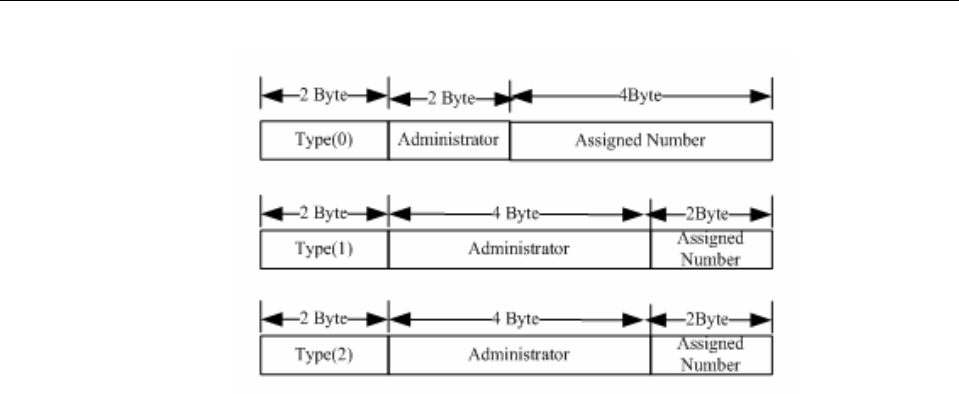
DES-7200 Configuration Guide Chapter 2 Configuring BGP IP VPN
2-4
Figure 6 RD structure
1) When Type = 0, the administrator field has two bytes and is marked by the AS number
that must be of a public AS. The assigned number has four bytes that are managed by
the service provider.
2) When Type = 1, the administrator field has four bytes and uses an IPv4 address that
must be a global IP address. The assigned number has two bytes that are managed by
the service provider.
3) When Type = 2, the administrator field has four bytes and is marked by the four-byte AS
number. The assigned number has two bytes that are managed by the service provider.
Route-Target
The introduction of the RT attribute is to let the VRF choose its route selection mode. The RT
attributes are classified into export Route-Target and import Route-Target. A PE receives routes
from a CE and adds Export Route-Target to the VPN routes and then notifies other PEs of the
VPN routes. The PE determines whether to import the routes received from other PEs to the
VRF based on the Import Route-Target. One principle is that when a PE receives a VPN route,
the PE imports the route to the VRF only when at least one RT attribute carried in the route is the
same as the Import RT in the VRF of the PE. In this manner, you can flexibly control the
advertising of VPN routes. One VPN route can carry multiple RT values.
The BGP extended community attribute defines the RT encoding structure, as shown in the
following figure.


















